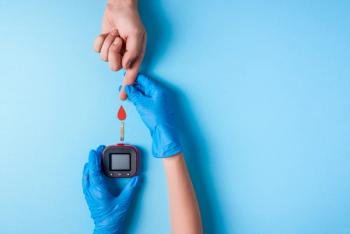
- Drug Topics June 2023
- Volume 167
- Issue 06
Pharmacists Play Key Role in Managing Diabetic Eye Disease
Patients may not experience any early symptoms, making screening especially important.
As the prevalence of diabetes increases, so does that of diabetic eye diseases. From diabetic retinopathy and diabetic macular edema to cataracts and glaucoma, this group of diseases can cause vision loss and other complications in indi-viduals living with diabetes.
Common Diabetic Eye Diseases
Diabetic retinopathy is the most com-mon cause of vision loss in patients with diabetes. Approximately 1 in 3 persons with diabetes older than 40 years has some signs of diabetic retinopathy, but finding and treating this disease early can lower the risk of blindness by 95%.1 Diabetic retinop-athy can cause blood vessels in the retina to swell and leak fluid. Vision loss and retinal detachment can result, without treatment.2
Diabetic macular edema (DME) occurs when blood vessels leak fluid into the macula, a part of the retina that is essential to vision. DME usually develops in those affected by diabetic retinopathy.2
Individuals with diabetes have double the risk of developing cataracts or glaucoma compared with those without diabetes.1 Cataracts involve a clouding of the eye’s clear lens. High levels of blood glucose are suspected to cause deposit buildup in the lenses.2 Glaucoma is a group of eye diseases that damage the optic nerves. Glaucoma associated with diabetes occurs when there is damage to blood vessels in the front of the eye. New vessels then grow near the iris and obstruct fluid drainage, leading to a buildup of fluid and pressure in the eye.2
Symptoms and Diagnosis
Early in the course of the disease, patients may not experience any symptoms—making it critical to regularly follow up with an ophthalmologist for a full, dilated examination.2
Symptoms of diabetic eye disease may include1,2 spots or wavy, floating dark strings, blurry or wavy vision, frequent changes in vision, difficulty seeing colors, and flashes of light.
Patients should consult their health care provider immediately if they experience symptoms that include many new spots or wavy, floating dark strings, flashes of light, a dark shadow over any part of their vision, vision loss or sudden changes in vision, or pain or redness in the eye(s).1,2 The health care provider will perform a full, dilated eye exam, check vision, and measure pressure in the eyes.1
Diabetic Eye Disease Treatment
Treatment may include eye drops to lower ocular pressure, ocular antivas-cular endothelial growth factor injections, laser treatments top stop blood vessels from leaking, and/or surgery to remove blood and scar tissue, or to replace a cloudy lens.
How Can Pharmacists Help?
Pharmacists can teach patients about the “diabetes ABCs,” or the importance of managing blood glucose (HbA1C), blood pressure, and cholesterol. Pharmacists can also encourage patients who smoke to stop, and provide referrals to a smoking cessa-tion program. It is also important to remind patients with diabetes to have a full, dilated eye exam every year. In many cases, health care providers can identify problems during these exams before symptoms occur.1
Stephanie Redmond, PharmD, CDCES, BC-ADM, founder and vice president of DrStephanies.com, frequently offers advice to pharmacists in counseling patients on diabetes and eye health. “I think it would be important when counseling patients on medications, or refill reminders for blood pressure medications and diabetes medications, how this impacts eye health,” she noted. “Giving context on how high blood pressure and blood [glucose] damages blood vessels—including blood vessels in the eyes—can influence a person’s decision to be [adherent to] medications and motivate [them] to take care of themselves.”
Redmond also explained that in her patients with diabetes, “losing vision and eye health was a leading reason that people wanted to get control of blood [glucose]. It is a very tangible and scary symptom, so I think as health care professionals, we can leverage that. And since patients see their pharmacists much more frequently than their primary care provider, we have an opportunity to be essential in education and [adherence].”
Redmond suggested that pharmacists familiarize themselves with medications that warn of eye problems (see Diabetic Retinopathy and Glycemic Control, above), and counsel patients with preexisting eye conditions to report any changes in vision to their health care provider. She also suggested consulting with health care providers regarding a slower titration in doses of glucose-lowering medications to avoid the rapid drop in blood glucose that may exacerbate eye problems.
References
Diabetic eye disease. National Institute of Diabetes and Digestive and Kidney Diseases. Updated May 2017. Accessed April 11, 2023. https://www.niddk.nih.gov/health-information/diabetes/overview/preventing-problems/diabetic-eye-disease
Diabetic eye problems. Medline Plus. Updated December 6, 2021. Accessed April 11, 2023. https://medlineplus.gov/diabeticeyeproblems.html
Articles in this issue
over 2 years ago
Do’s And Don’ts: Social Media Tips for Pharmacistsover 2 years ago
What You Need to Know About the Albuterol Shortageover 2 years ago
Number One No Longerover 2 years ago
COVID-19: After the Emergency Endsover 2 years ago
Staying Safe This Summerover 2 years ago
Breaking: FDA Approves First-Ever RSV VaccineNewsletter
Pharmacy practice is always changing. Stay ahead of the curve with the Drug Topics newsletter and get the latest drug information, industry trends, and patient care tips.















































































































